The 25 Best Runs in the World
Epic ultras in the Alps. An urban loop in running's most beloved city. High desert treks through the American Southwest. These are without a doubt the best runs on the planet.
Heading out the door? Read this article on the Outside app available now on iOS devices for members! Download the app.
Humans were born to run. It’s literally one of the things we do best. But beyond its health and mental benefits, what keeps us coming back is the sheer variety of routes out there waiting for us to lace up. And that’s what makes this list so special. Whether you’re looking for a quick urban jaunt or a 100-plus-mile big-mountain ultra, there’s a bucket-list run in this roundup that’s calling your name. Is the list subjective? Sure. But as a professional travel writer and (sometimes masochistic) runner, I have a pretty good idea of what places belong below. To put this together, I relied on personal experience as well as recommendations from equally dedicated runner friends and colleagues.

Timberline Trail
Mount Hood, Oregon
Distance: 38-mile loop
Elevation Gain: 9,000 feet
In the Pacific Northwest, there are multiple trails that circle the area’s volcanic giants, but the best may be the Timberline Trail, which loops 11,240-foot Mount Hood. The trail was built by the Civilian Conservation Corps in the 1930s and mostly stays around tree line. Views of the peak and its glaciers are nearly constant, and you’ll spot waterfalls, wildflowers, alpine meadows, and old-growth forests along the way. If you’re there in August, you’ll likely encounter thru-hikers on their way north to Washington on the Pacific Crest Trail. The route is well maintained and marked, but fording the numerous rivers can be dangerous. When in doubt, don’t cross.

Hudson River Waterfront Walkway
Bayonne, New Jersey, to the George Washington Bridge
Distance: 18.5 miles one way
Elevation Gain: Flat
If you run in Manhattan, it’s harder to see Manhattan. But to the west, on the New Jersey side of the Hudson River, this waterfront path provides views of the city of 8.6 million and its endless sea of skyscrapers. Parts of the route have yet to be completed, but our favorite section is the three-mile stretch that runs north from Morris Canal Park to Pier A Park in Hoboken, passing the Korean War Veterans Memorial and Lefrak Point Lighthouse. It’s best done just before sunset as the city lights start to shine.

Tour du Mont Blanc
Switzerland, Italy, France
Distance: 105-mile loop
Elevation Gain: 32,000 feet
This is perhaps the most luxurious run over 100 miles out there. You could do it at all once, but that would be to deny yourself two of the main joys of the Alps: the wine and cheese. Good thing you don’t have to choose between hedonism and masochism on this incredibly difficult and rugged route—you get both. So you’ll be free to run from hut to hut over stunning mountainside trails through France, Italy, and Switzerland, knowing that after gaining between 3,000 and 5,000 feet of elevation each day, you’ll be greeted with delicious libations. Or really take your time and hike it instead.

Lake Ouachita Vista Trail
Mountain Pine, Arkansas
Distance: 38.3 miles one way
Elevation Gain: 3,683 feet
The Lake Ouachita Vista Trail, which was built over the past 10 to 15 years, curves through the Ouachita National Forest’s rolling mountain hills and stands of hardwood and pine. Like the name suggests, it also opens up to views of the deep-blue lake. In the summer, you’ll find wildflowers, and in autumn, the leaves turn to pleasing oranges and reds. Runners will top out 1,000 feet above the lake on Hickory Nut Mountain and enjoy a long section of ridgeline in the trail’s eastern section. Pro tip: the western end of the trail is in a dry county, so keep that in mind if you’re keen on a postrun beer.

Lake Bled Loop
Bled, Slovenia
Distance: 3.7-mile loop
Elevation Gain: Flat
Bled, a picturesque Slovenian mountain town, looks more apt to grace the pages of a fairy tale than exist in reality. It and its castle sit right on the bucolic turquoise lake, and there’s even an island in the middle that’s home to a church only accessible by boat. The flat loop hugs the tree-lined lakeshore, passing beaches for swimming and waterfront restaurants for refueling. Extend your run by heading up one of the many trails that lead into the hills.

Kepler Track
Fiordland National Park, New Zealand
Distance: 36.7-mile loop
Elevation Gain: 6,388 feet
Located on New Zealand’s South Island in famed Fiordland National Park, this loop provides a healthy dose of mileage across alpine ridgelines, through forest, and alongside tranquil, expansive lakes. Expect a well-maintained and easy-to-follow path that changes from gravel to rock and dirt. Huts, complete with bunks and mattresses, can be booked along the way if you’d prefer to linger over the views of Lake Te Anau and the Murchison Mountains or swim the route’s various lakes and beaches. Permits are required, and the trail makes for an amazing four-day thru-hike.
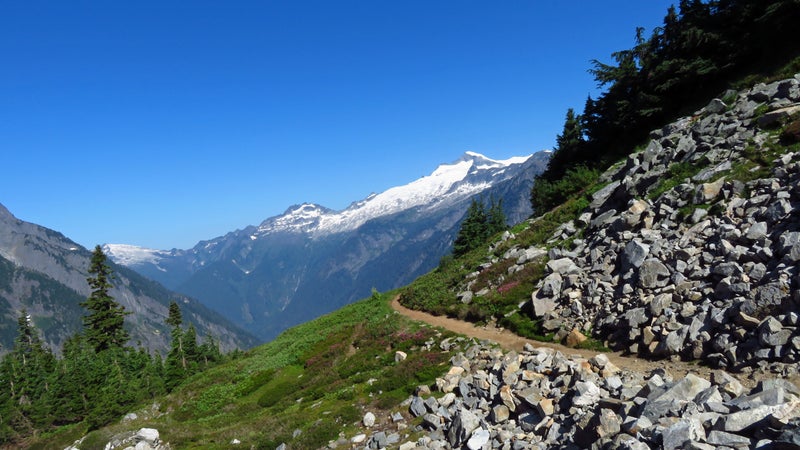
Copper Ridge Loop
North Cascades National Park, Washington
Distance: 34-mile loop
Elevation Gain: 8,600 feet
In 1968, a nearly century-long effort to designate this rugged region as a national park was finally realized with President John F. Kennedy’s signature. It’s easy to see why it’s worthy of federal protection when you’re on the Copper Ridge Loop. The trailhead is about 3.5 hours from Seattle, and the singletrack route winds 34 miles through dense forest, across ridgelines, and through a lush river valley. Vistas of heavily glaciated Mount Shuksan, Mount Baker, and the remote Pickett Range abound. Expect jagged summits coated in sprawling glaciers, evergreen trees, sparkling alpine lakes, and fields of wildflowers. Bonus: you’ll even cross the Chilliwack River via two-seater cable car.
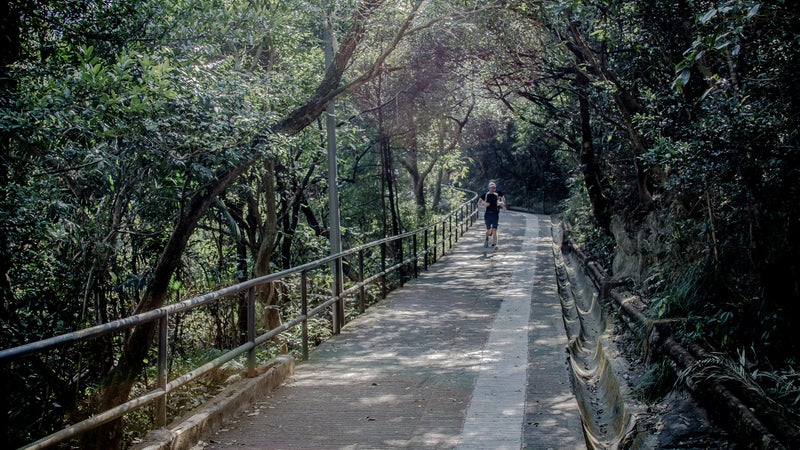
Hong Kong Trail
Victoria Peak, Hong Kong
Distance: 31 miles one way
Elevation Gain: 4,300 feet
This well-signed trail runs 31 miles from Victoria Peak, the highest point on Hong Kong Island, to Tai Long Wan (which translates to Big Wave Bay) and consists of eight different sections. The first two are partially paved, but later sections are slightly more rugged. The paths are shaded by a canopy of trees, so it’s a great place for avoiding the sun during warmer months. From Victoria Peak, you can soak up panoramas of Victoria Harbor and Kowloon, the mainland portion of the city. Along the way, you’ll find diverse plant life, reservoirs, waterfalls, and stunning views. The terminus of the trail sports nice views of its own as well as a beach.
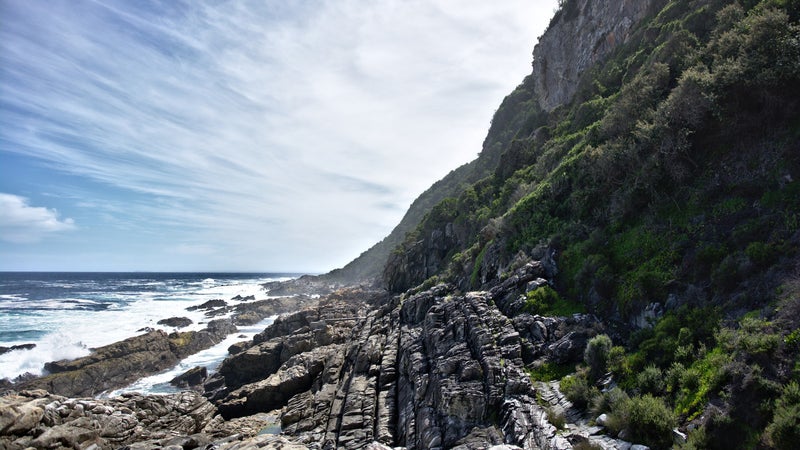
Otter Trail
Garden Route National Park, South Africa
Distance: 26 miles one way
Elevation Gain: 9,737 feet
This is the most exclusive trail on our list. Located in Garden Route National Park, the area is strictly protected, and people often have to wait a year to reserve their spot as only 12 people can start the hike each day. Which means if you’re lucky enough to get a chance to hit the trail, you won’t find any crowds. The path passes through diverse landscapes that include evergreen forests, waterfalls, rivers, a rugged coastline, pristine beaches, and an array of flora and fauna. Want to race it? The Otter Trail Run is held in October.
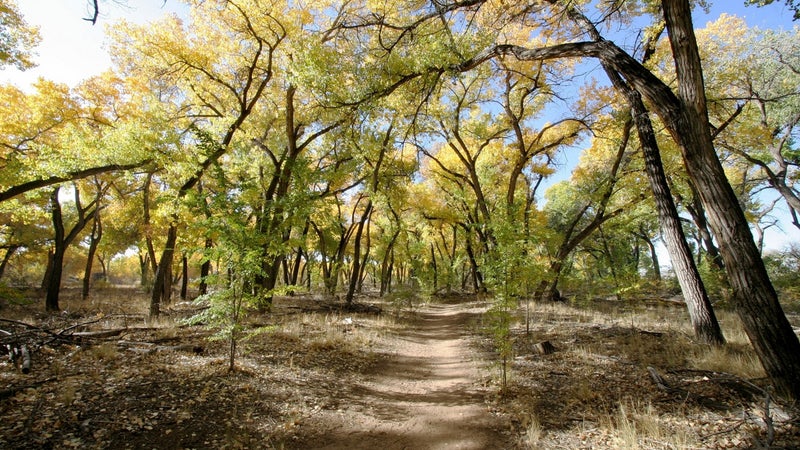
Bosque Trail
Albuquerque, New Mexico
Distance: 16 miles one way
Elevation Gain: 75 feet
The Bosque Trail is a paved path that flanks the Rio Grande in a lush river valley just north of Albuquerque. To the east, the Sandia Mountains dominate the horizon at over 10,000 feet. To the south, the skyline of New Mexico’s biggest city cuts the sky. This run is best done on crisp fall mornings, as the cottonwood trees start to yellow and colorful hot-air balloons rise above you. The flat trail allows runners of all skill levels to get into an easy rhythm while enjoying views of nature.

Grand Canyon Walk
Greater Blue Mountains, Australia
Distance: 4-mile loop
Elevation Gain: 1,020 feet
In 2000, the Greater Blue Mountains and their dense forest of eucalyptus trees became a Unesco World Heritage site. The Grand Canyon Walk, opened in 1907, is one of the more popular trails to explore the region, with views of the mountains and across the sprawling Grose Valley. You’ll run through lush rainforests and past sandstone walls, overhanging rock, caves, and waterfalls.
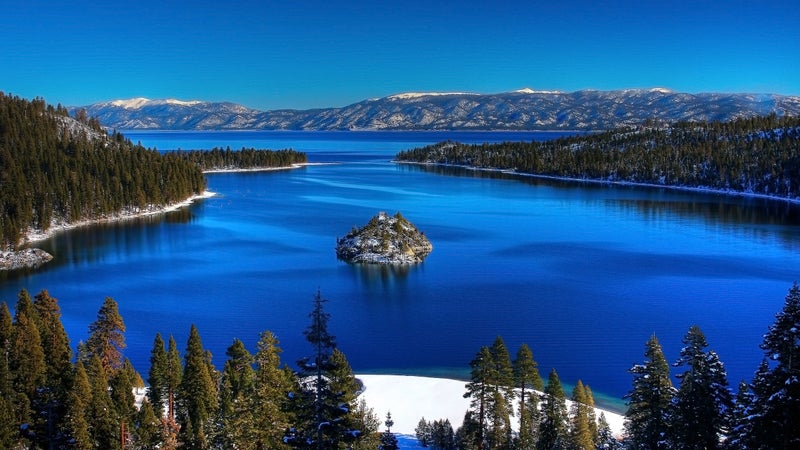
Tahoe Rim Trail
Tahoe City, California
Distance: 170-mile loop
Elevation Gain: 27,916 feet
This ultra circles the sparkling blue waters of expansive Lake Tahoe and offers stunning mountain vistas. The route crosses both the Sierra Nevada and the Carson Range, through forests of ponderosa pine, past smaller lakes, and across ridgelines with sweeping views. Many runners start from Tahoe City and head clockwise, finishing on the section that cuts through the Desolation Wilderness. Permits are required, so you’ll want to plan ahead. And if you’d rather tackle the footpath in a more organized fashion, the Tahoe Rim Trail Endurance Runs are held every July.
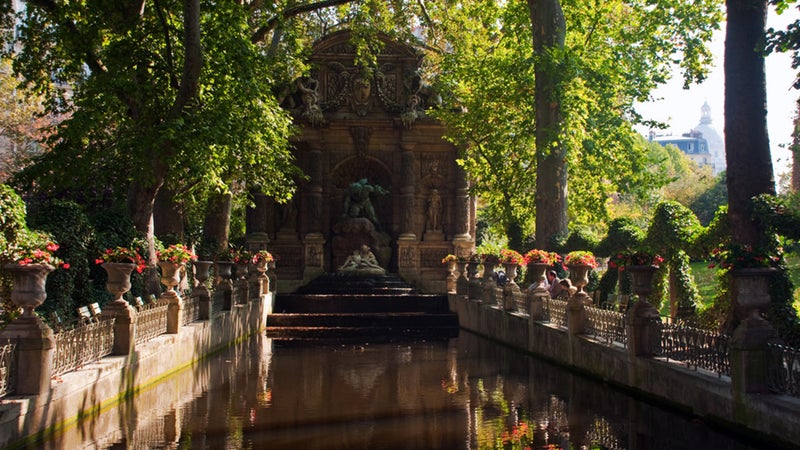
Luxembourg Gardens
Paris, France
Distance: 1.3-mile loop
Elevation Gain: Flat
The 56-acre Luxembourg Gardens, just a mile from the banks of the Seine River and Notre Dame Cathedral, offer a tranquil reprieve in this city of more than two million. The 1.3–mile loop around the perimeter of the gardens is the shortest route on our list, but you’d be remiss not to zigzag through the paths bisecting the grounds. Created in 1612 by Marie de Medici, who was married to King Henry IV, the attraction is also home to some 100 statues, fountains, perfect grass, beautiful flowers, and the grand Luxembourg Palace.

Carthew-Alderson Trail
Waterton Lakes National Park, Canada
Distance: 12 miles one way
Elevation Gain: 1,438 feet
Start at Cameron Lake and make your way 12 miles to the town of Waterton, which sits on the tree-lined coast of Waterton Lake—at 444 feet, the deepest body of water in the Canadian Rockies. Switchbacks climb high into the hills above lush valleys surrounded by snow-capped mountains, and you’ll earn views of turquoise lakes, steep peaks, and alpine meadows. If you know where to look, you can even spy points within Glacier National Park, just across the international border. Far from any major population center, this run is seldom crowded.
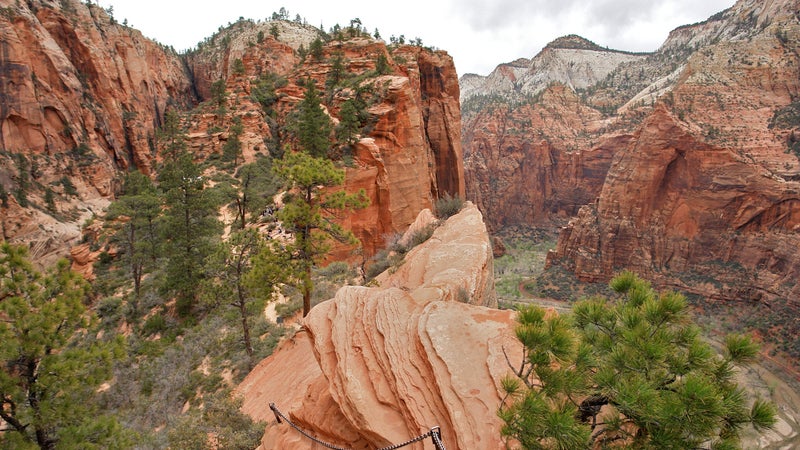
Zion Traverse
Zion National Park, Utah
Distance: 48.8 miles one way
Elevation Gain: 6,292
The Zion Traverse is a long tour through an incredibly diverse landscape. The route cuts through scenic canyons tucked between towering 2,000-foot sandstone cliffs, and you’ll get to enjoy slopes of bright-green pine and juniper popping against a backdrop of red and brown rock, hanging gardens, waterfalls, and unique sections of exposed trail. As the run drops from nearly 9,000 feet to less than 4,000 feet, it’s interesting to watch the topography change from a lush riparian environment to sandy desert. Careful planning is necessary in order to account for heat and water resources. And you won’t want to forget a camera.

Lagunas Altas Loop Trail
Patagonia Park, Chile
Distance: 14-mile loop
Elevation Gain: 4,160 feet
Created with the help of Kristine Tompkins, CEO of Patagonia, and her late husband Doug, who cofounded the North Face, the newly minted Patagonia National Park protects over two million acres of land. The 14-mile Lagunas Altas Trail in the Aysén region’s Chacabuco Valley starts at West Winds Campground, which is not far from park headquarters, and provides sweeping views of the area’s mountains, the Northern Patagonian Ice Field, alpine lakes, dense forest, and rocky outcroppings. Look for deer, pumas, and condors along the way. The run is worth a trip by itself, but it also makes for a great pit stop on the Carretera Austral, a scenic road that’s long drawn bikers and road-trippers.

Four Pass Loop
Aspen, Colorado
Distance: 28-mile loop
Elevation Gain: 7,327 feet
The Forest Service calls Four Pass Loop, which ascends four 12,000-foot mountain passes, an “ambitious backpacking trip.” It’s an even more ambitious one-day run. But for those ready for the lung-squeezing altitude, it also features a series of incredibly beautiful views through the Maroon Bells-Snowmass Wilderness. The easy-to-follow trail passes alpine lakes, through fields of wildflowers and aspen trees, and offers vistas of the severe Maroon Peaks and thundering waterfalls, including one that tops out at nearly 200 feet. Make sure to bring adequate layers for the passes, where a sunny day can quickly turn to snow, even in the summer.
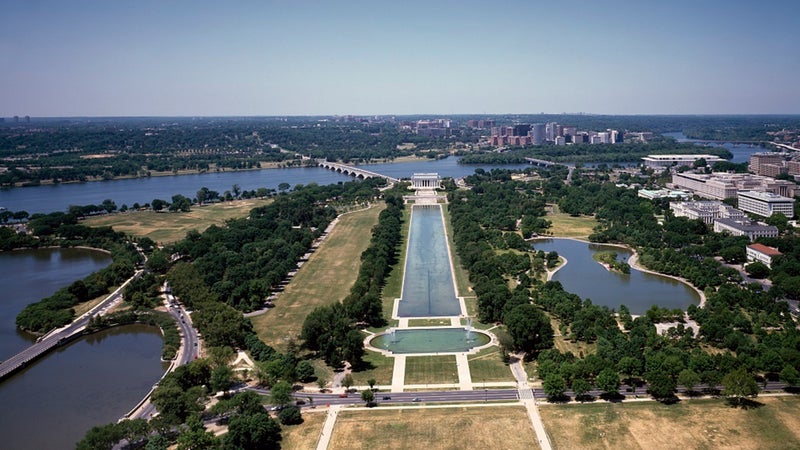
Potomac River to the National Mall
Washington, D.C.
Distance: 4.8 miles one way
Elevation Gain: Flat
Start in Georgetown on the southern portion of the C&O Canal Trail, and follow the canal’s former towpath southeast past rows of Colonial-style homes to Rock Creek Park Trail. From there, drop down to the northern bank of the Potomac River, follow it past the stunning Kennedy Center for the Performing Arts, and head up the back side of the Lincoln Memorial. Continue past the memorial’s reflecting pool and toward the 555-foot-tall Washington Monument. The route ends at the U.S. Capitol, which is sure to stoke your patriotism if it hasn’t been already. The run is best done before the city wakes up: sunrise is one of the only times the area is quiet.
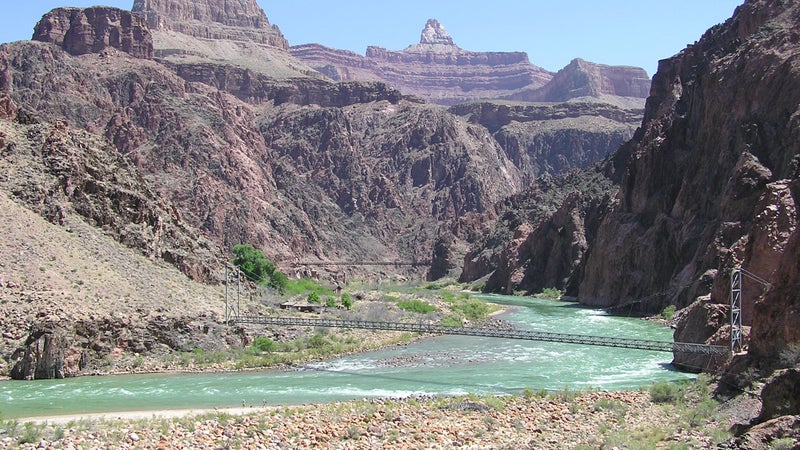
Rim-to-Rim-to-Rim
Grand Canyon National Park, Arizona
Distance: 48.8 miles round-trip
Elevation Gain: 11,400 feet
The Rim-to-Rim-to-Rim is one of the most spectacular ways to experience the Grand Canyon. You stand at its edge, staring down into the belly of the earth, before dropping 5,000 feet to the bottom to explore the changing landscape in detail. It should come as no surprise that this nearly 50-mile day mainly consists of either climbing up or going down, with a brief respite near the Colorado River. That’s one reason it’s a testpiece for elite runners trying to set FKTs, but the trail is equally remarkable for the rest of us mortals. It’s one of the best self-propelled geology tours there is.
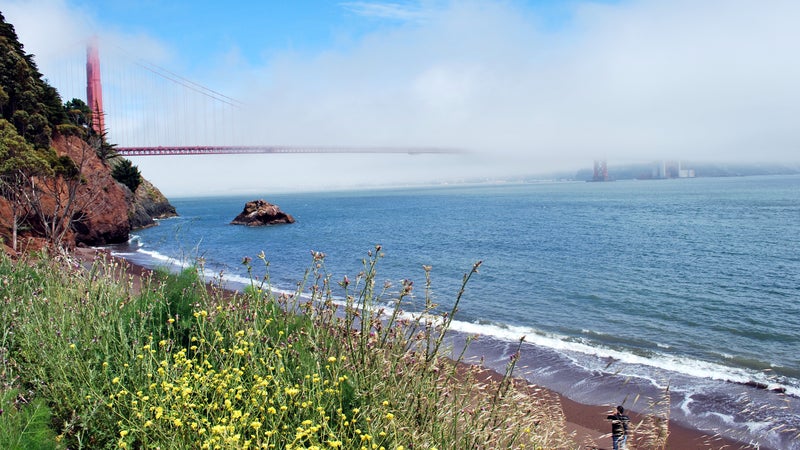
Coastal Trail
Marin Headlands, California
Distance: 5.9 miles one way
Elevation Gain: 1,750 feet
The Marin Headlands are right across from San Francisco and home to miles of fire roads and singletrack through hills of tall grass, past beaches, and up to lookouts with prime views of the city and the Golden Gate Bridge. It’s hard to go wrong, and you can easily link trails together to craft whatever kind of workout you’re looking for. Our favorite option? Hopping on the Coastal Trail at Rodeo Beach and taking it up into the hills along the Pacific into the Tennessee Valley, ending at Muir Beach.
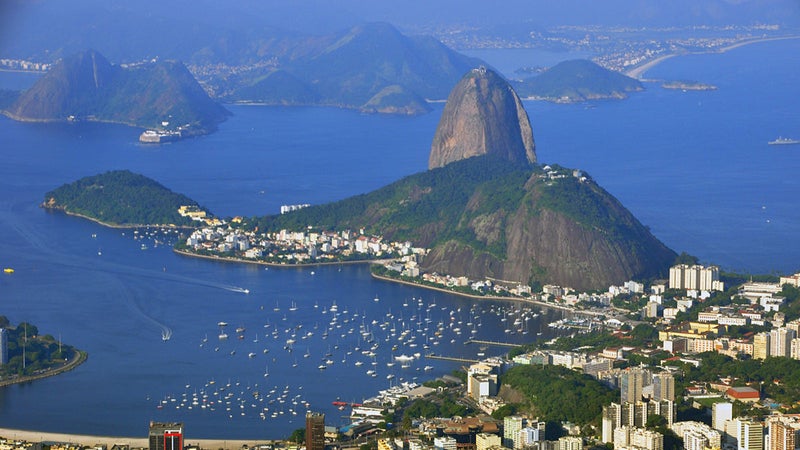
Transcarioca Trail
Rio de Janeiro
Distance: 111 miles one way
Elevation Gain: 42,650 feet
In 1995, Pedro da Cunha e Menezes, a Brazilian hiker, visited the Appalachian Trail and was inspired to create a long-distance trail near Rio. He had a lot of experience hiking paths in the area, and his work as a flight attendant helped him scout it from the air. Twenty years later, the Transcarioca was born. The trail starts in the city near the iconic Sugarloaf Mountain and continues on past lagoons, waterfalls, and jungles through six different protected areas.
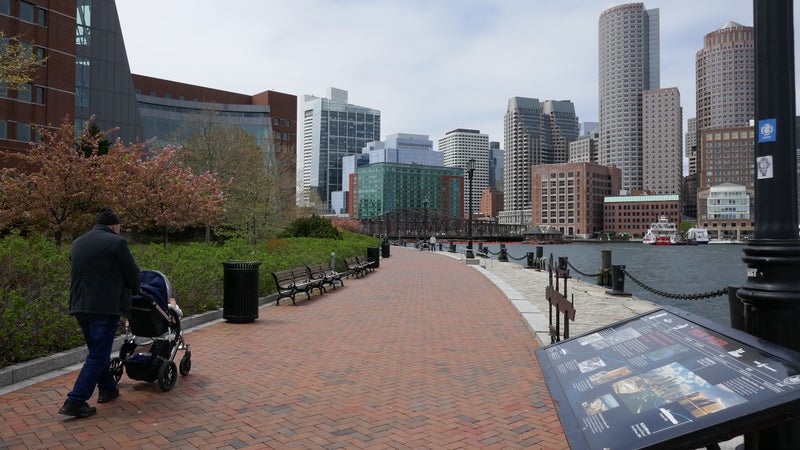
Charles River Path
Boston
Distance: 8-mile loop
Elevation Gain: Flat
There are few running towns as storied as Boston: it has hosted the legendary Boston Marathon since 1897, after all. Every April, elite athletes and amateurs alike flock to the city to run the course, but this eight-mile loop of a portion of the Charles River, which divides Boston from Cambridge, may be an even better run for nonsuperhumans. The tour starts from Science Park in Boston and runs to Harvard University before crossing the bridge at JFK Street and heading back along the other side of the waterway. Enjoy the grassy riverbanks, and watch boats cut across the smooth water.

Prenj Massif to Vran Mountain on the Via Dinarica
Bosnia and Herzegovina
Distance: 40 miles one way
Elevation Gain: Flat
The Via Dinarica hiking trail spans 1,200 miles and eight countries across the Balkans, from Slovenia to Serbia. The result of a collaborative effort to promote tourism, the route passes through tiny villages and open meadows, past shark-fin ridges, and down the Adriatic coast. It would be incredible to do the trail in its entirety via a longer thru-run, but it’s ripe for picking off prime sections one by one. The road to Prenj Massif is a great place to start. The peak itself rises over 7,000 feet, a jagged limestone gem for area mountaineers, and the landscape between Prenj and Vran displays some of the best of Bosnia’s rugged high alpine. But beware: the route is lined with forests and signs warning people not to enter due to unexploded land mines, relics from the region’s wartime past.

Teton Crest Trail
Jackson, Wyoming
Distance: 39 miles one way
Elevation Gain: 8,061 feet
Running deep into the Tetons will allow you to both leave the summer crowds behind and see the mountain range from a less common perspective. The Teton Crest’s 39 miles (depending on where you start) rarely drop below 8,000 feet and have the same amount of elevation gain. The route passes through Grand Teton National Park, the Jedediah Wilderness Area, and the Bridger-Teton and Caribou-Targhee National Forests. You can expect staggering peaks, meadows, glacier-carved canyons, alpine lakes, mountain passes, and a section of particularly amazing views from the iconic Death Canyon Shelf. August is great for its relative lack of mosquitoes and abundance of wildflowers. And to really soak in the route’s dramatic beauty, the trail also makes for a great, quick thru-hike.
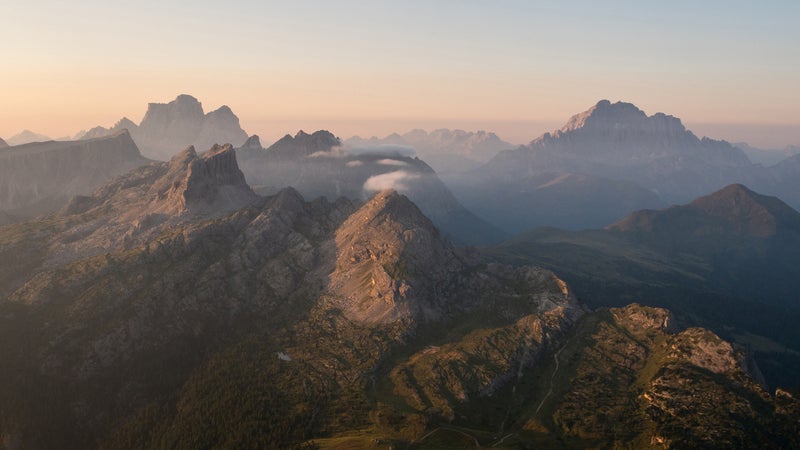
Alta Via 1
The Dolomites, Italy
Distance: 75 miles one way
Elevation Gain: 22,000 feet
On the other end of the Italian Alps from Mont Blanc you’ll find the equally stunning Dolomites and the Alta Via 1, one of Italy’s famed, numbered high-Alpine footpaths. The route starts on the shores of Lago di Braies, a stunning mountain lake in South Tyrol, and finishes in the town of Belluno, 60 miles north of Venice. As you can gather from the elevation gain, the trail has many ups and downs along the way, but you don’t have to do it all in one go: there are a number of refugios (backcountry huts) to rest your weary muscles.
